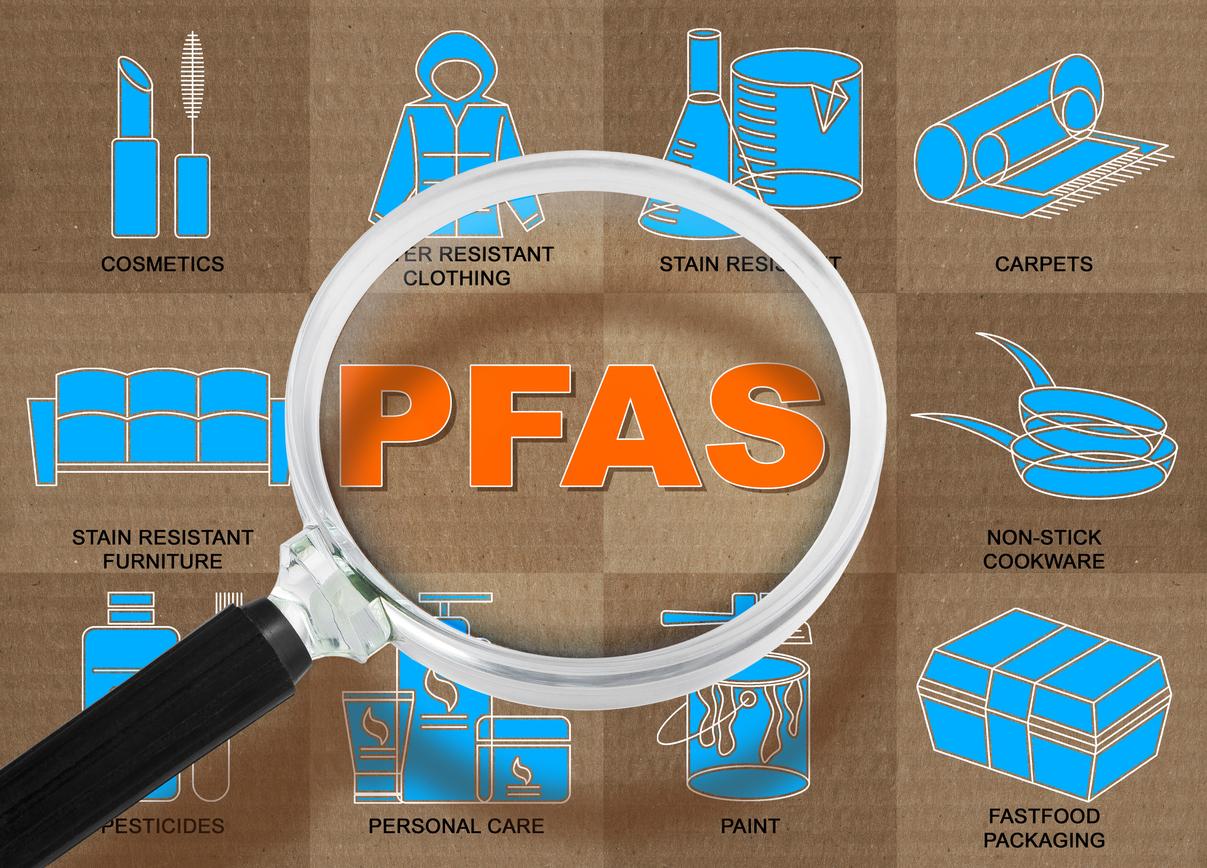ANSES takes stock of very persistent chemical substances known as “PFAS”.

- Per- and polyfluoroalkyl substances, all grouped under the name “PFAS”, represent a large family of several thousand chemical compounds.
- PFAS cause pollution of all environments: water, air, soil and even sediments.
- Scientific work on certain PFAS shows that they can have harmful effects on humans: increased cholesterol levels, cancers, etc.
For several years, the term “PFAS” appears more and more in the media and the research sector. But what are they? Where are they found? What are their impacts on our health? In a new summary document published on its site, ANSES (anational agency for food, environmental and occupational health safety) answers all these questions.
What are PFAS?
Per- and polyfluoroalkyl substances, all grouped under the name “PFAS”, represent a large family of several thousand chemical compounds. Non-stick, waterproof and resistant to high heat, these substances have been widely used since the 1950s in various products: textiles, food packaging, fire-fighting foams, refrigerant gases, non-stick coatings, cosmetics, medical devices, plant protection products, etc.
“The many PFAS have in common that they are persistent in the environment due to the strength of the carbon-fluorine bonds they contain,” specifies ANSES. “Thus, PFOS (perfluorooctane sulfonate) and PFOA (perfluorooctanoic acid), whose uses have been very strongly restricted at the international level respectively since 2009 and 2020, are still frequently measured in the environment”, she continues.
Where are PFAS found in the environment?
PFAS cause pollution of all environments: water, air, soil and even sediments. “Some accumulate in plants or animals and end up in the food chain. indicates ANSES. “Others, more mobile, are transported over very long distances by water or air and can be found even in the oceans,” she adds.
What are the sources of human exposure to PFAS?
The persistence, mobility and accumulation properties of PFAS in living organisms result, over the years, in increasing exposure of the human population to these chemicals.
According to the EFSA, seafood, eggs and meat are the foods contributing the most to exposure to PFOS and PFOA. Water intended for human consumption can also be a source of exposure, as can indoor air, outdoor air, dust and contaminated soil. “Occupational exposure to PFAS can occur in several sectors, including the chemical industry, textile processing, electronics manufacturing, and in firefighting.” details ANSES.
PFAS: why are these compounds a concern for our health?
Scientific work on certain PFAS shows that they can have harmful effects on humans: increased cholesterol levels, cancers, effects on fertility, impacts on fetal development, consequences on the liver, kidney attacks, etc. “They are also suspected of interfering with the endocrine (thyroid) and immune systems,” completes ANSES.
“In December 2023, the International Agency for Research on Cancer (IARC) classified PFOA as “carcinogenic to humans” (Group 1) and PFOS as “possibly carcinogenic to humans” (Group 2B) “, she recalls.
“Faced with this very large and particularly persistent family of substances in the environment, the difficulty is to identify or distinguish those which present the most worrying danger characteristics”, estimates Matthieu Schuler, deputy general director of the science center for expertise at ANSES. “This calls for accelerating research on substances, particularly for those most frequently found in the environment, and developing innovative approaches to characterize their toxicity,” he concludes.
















